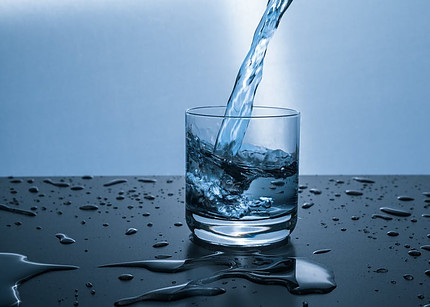The question “How much water are you supposed to drink in a day” is simple, but the answer is a little more complicated. It depends on factors such as your health, how active you are, and where you live. Although there is no one formula for calculating the ideal amount of water for everyone, there are some guidelines to help you determine the optimal water intake. There is a golden rule to familiarize yourself with.
Water is necessary not only for good health but also for any health because, without it, there is no life. The need for water, i.e., the amount we need to drink, varies from individual to individual.
How Does Water Flow Out of the Body?
Before we start counting how much water needs to be brought into the body, we need to know in what ways the body loses water.
Water exits the body:
- Through the process of breathing,
sweating,
urination and
by emptying the bowels
In order for the body to function well, it is necessary to replenish all that fluid.
How Much Water Are You Supposed to Drink in a Day?
About 1.5 liters of water are released daily by urination. The extra liter is lost by sweating and breathing, which brings us to a total of 2.5 liters of water consumed.
The food we eat covers about 20% of the water requirement (half a liter). By simple calculation, we come to the fact that we need to consume an additional 2 liters of fluid a day (extra because we do not count food there).
The Golden Rule
If you drink enough water, your urine will be translucent or light yellow. If you do not drink enough liquid, it will be dark yellow.
When Should Water Intake Be Increased?
Depending on the area you live in, the season, your physical activity, and your pregnancy, there are times when water intake should be increased:
- Exercise – Any activity where you sweat extra requires water intake. For moderate exercises such as half an hour of brisk walking or cycling, it is necessary to drink about half a liter of water. It’s important to know that sweating not only loses water but also electrolytes (that’s why sweat is salty). After the activity, you can salt the meal a little harder. It is also good to consume energy drinks with electrolytes.
- Climate – If you live in a warm and humid climate where you sweat a lot, you need to increase your water intake. If you live at a very high altitude – above 2,500 m extra urination and rapid breathing are possible so that you will feel the need for additional fluid.
- Illness – With fever, vomiting, and diarrhea, more fluid should be consumed to prevent dehydration.
- Pregnancy – The amount of water intake during pregnancy and breastfeeding must be increased. The American Institute of Medicine advises pregnant women to consume 2.3 liters of water a day and those who breastfeed as much as 3.1 liters.
Foods Rich in Water
Many fruits and vegetables contain lots of water. Tomatoes and apples contain 90% water. Caution should be exercised when consuming caffeinated beverages as they give water, but they also take it away(caffeine dehydrates the body). Caffeinated drinks (e.g., coffee) should by no means be the primary source of water.
How to Hydrate?
For the most part, the rule is that it is not good to drink only when we feel thirsty because, by then, we are already becoming slightly dehydrated. Unfortunately, as we get older, our bodies detect dehydration less and later send a signal to the brain that we need water.
Instructions:
- Drink a glass of water with every meal
- Hydrate before, during, and after exercise
- Avoid alcoholic beverages and too much caffeine as they dehydrate
Dehydration and Headache
Did you know that one of the more common causes of headaches is dehydration? Therefore, if you notice that your head has started to ache slightly, drink a glass of water.